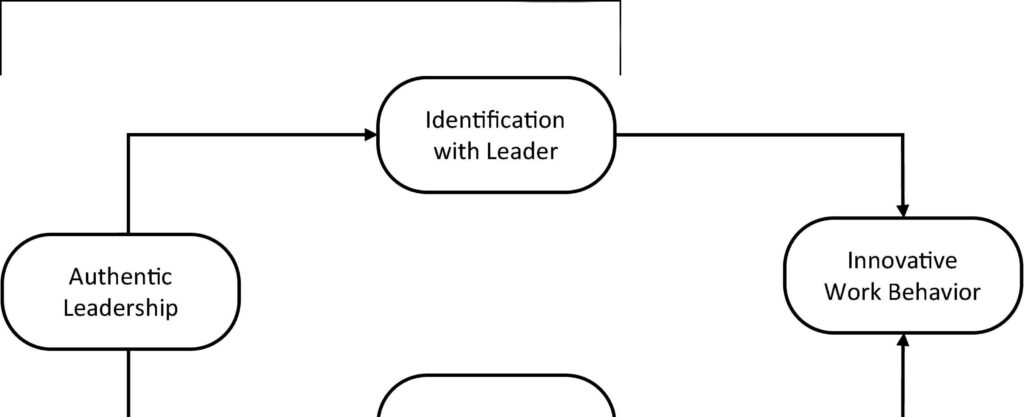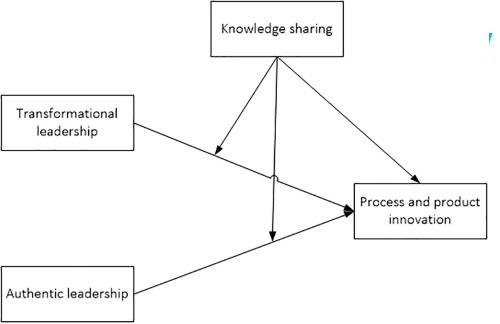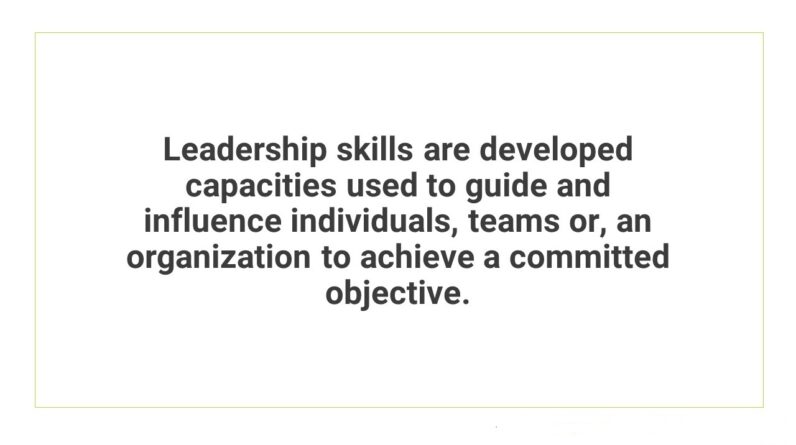 Authentic leadership motivates employees by inspiring proactive behavior. It satisfies employees’ three basic needs of belonging, autonomy, and control. Furthermore, employees with high political skill develop a close relationship with leaders and influence others to achieve organizational and personal objectives. Authentic leadership can inspire such proactive behavior and improve employee performance. However, there are some important issues to consider when evaluating whether authentic leadership is right for your organization.
Authentic leadership motivates employees by inspiring proactive behavior. It satisfies employees’ three basic needs of belonging, autonomy, and control. Furthermore, employees with high political skill develop a close relationship with leaders and influence others to achieve organizational and personal objectives. Authentic leadership can inspire such proactive behavior and improve employee performance. However, there are some important issues to consider when evaluating whether authentic leadership is right for your organization.
Positive affective commitment
The relationship between the level of affective commitment and the performance of individual employees in an organization can be explained by the concept of “authenticity.” In other words, employees are more likely to feel motivated and committed to a task when they know that their leaders are authentic. However, these qualities are not the same for all employees. They differ in age, gender, and education. In fact, the degree of affective commitment may vary even more than the level of individual performance.
Several theories suggest that authenticity influences employee performance. One such theory is social exchange, which suggests that when employees perceive their employers as genuinely caring about them, they will reciprocate by improving their own performance. Therefore, a leader who embodies this trait tends to inspire affective commitment in employees. Such leadership practices are also associated with improved performance. The authors conclude that these traits are important in improving employee engagement and morale.
A recent study suggests that authentic leadership fosters higher levels of affective commitment and creativity among employees. This may be attributed to the fact that authentic leaders are more likely to enhance desired behaviors and increase employees’ emotional attachment to their organizations. The study found that employees with stronger emotional connections with their employers are more likely to contribute to their organizations by presenting creative ideas and improving individual performance. In this way, the effects of authentic leadership on employee performance are well documented in the literature.
According to Meyer and Allen’s (2002) model, employees with high levels of affective commitment remain in an organization because they want to be there, but those with a high level of continuance commitment remain because they must avoid the costs of abandonment. The researchers suggest that employees may experience all three forms of commitment at once, but that only one will become dominant. A leader who possesses high levels of affective commitment has an ability to influence employee performance in a positive manner.
Individual creativity
Authentic leadership is one of the most influential factors in influencing individual performance. It is also related to affective commitment and individual creativity. These factors are the mediators of the relationship between authentic leadership and individual performance. Employees who feel that their supervisor is displaying authentic leadership behaviors are more likely to develop higher levels of individual creativity. This in turn leads to improved individual performance. Authentic leadership may improve employee performance and individual creativity in a variety of ways.
In an organisation, authentic leadership enhances psychological safety and cooperation. The CMC model identifies three factors that contribute to psychological safety: a sense of belonging, cooperation, and safety. Authentic leadership fosters psychological safety and cooperation behavior, which are essential for employee creativity and performance. When leaders are genuinely interested in enhancing creativity and cooperation, they will encourage their employees to be creative. The effects of authentic leadership are positive for organizations.
Developing authentic leaders requires organization-wide investments in the development of authentic leaders and in stimulating workplace creativity. This research identifies how increased emotional connections improve worker performance. While research on the connection between AL and creativity is limited, Chaudhary and Panda identify how the two factors interact to predict employee creative behavior. The findings provide guidelines for organizations interested in developing a creative workforce. These studies are not intended to be exhaustive, but should guide their efforts to improve employee performance.
Among the factors that influence individual creativity, organizational culture, and personality orientation all played a role. The findings support the combined effect of these factors. In addition to identifying the role of organizational culture, this research also examines how individual creativity and performance may be affected by authentic leadership. In the future, the results suggest that authentic leadership have positive effects on employee productivity. Therefore, authentic leadership is important for organizations to thrive in the competitive environment.
In addition to the effects of authenticity on employee performance and individual creativity, a supportive and authentic leadership environment is also important. Authentic leadership creates an environment that promotes risk-taking and creativity. A supportive environment and continuous leadership support encourage employees to think outside the box, which in turn leads to novel ideas and original solutions. Incorporating these factors into an organization’s culture is essential to its success.
Follower political skill
Research has shown that authenticity affects employee performance. A leader who is able to foster positive psychological states in others is said to be an authentic leader. While the concept of authentic leadership is not new, research has shown that it influences job outcomes. People who are proactive in changing the status quo are seen as authentic leaders. In this paper, we explore the effects of authentic leadership on employee performance. We find that the effect of authentic leadership is positively correlated with employee performance.
Authentic leadership was positively associated with job performance and job satisfaction in a survey of hotel employees. In addition, it improved the leader-supporter relationship. The study tested the multilevel, moderated mediation model using two-wave data collection methods. We found that employees’ perceived power distance orientation moderated the indirect relationship between authentic leadership and work engagement. This finding is surprising because previous research has shown that power distance negatively affects employee engagement.
A strong leader has an ability to generate positive psychological capital in followers. This creates a sense of belonging and confidence in subordinates. In turn, this helps them feel supported. They believe they have the potential to achieve more than they had thought possible. In short, authentic leaders inspire confidence in their subordinates. That’s a powerful source of motivation for employees. However, it is not easy to cultivate these kinds of relationships.
According to recent research, authentic leadership encourages independent thinking and voicing of behavior before making decisions. Authentic leaders also foster a sense of competence and autonomy in subordinates. Authentic leaders create an atmosphere of trust and mutual help among employees. This, in turn, may increase self-efficacy and satisfy employees’ need for competence. This is one reason why authentic leaders are so important for organizations. It shows how much authentic leadership can improve employee performance.
In addition to inspiring proactive behaviors, authentic leaders can also satisfy employees’ three basic needs. Employees with high levels of political skills can form a stronger connection with their leaders. They can influence others to achieve their own personal and organizational goals. These results indicate that authentic leaders are more likely to influence employee behavior. But, despite their positive impact, employees who are not politically adept may not necessarily be the best candidates for such leadership positions.
Autonomy
Authentic leadership is a way to empower subordinates to take risks and challenge established patterns. It also fosters innovative behavior by creating an environment that encourages originality. Several studies have found a link between innovative behaviour and authentic leadership. According to Muceldili and colleagues, “authentic leadership influences employee creativity and innovative behaviour.” The effect is mediated by psychological resources, work engagement, and attitudes toward the workplace.
Authentic leadership is characterized by high self-awareness, relational transparency, and internalized moral perspective. It is also characterized by the ability to assess and evaluate the merits of criticism. Leaders who are authentic in their behavior reflect on the value of their own values, and they do not overstate relevant information. The influence of authenticity on employee performance may be greater than previously thought. However, it should be noted that there are some exceptions to these conditions.
In general, the study results suggest that the relationship between authenticity and innovative behavior is mediated by employee trust in the leader. Authentic leadership is not a job description but rather a result of an individual’s own personality and motivation. Therefore, the effectiveness of an organization is ultimately based on how well a leader is able to engage with his or her followers. But how can this relationship be further explored?
The impact of autonomy of authentic leadership on employee engagement and performance is mediated by a strong word-deed alignment. Strong word-deed alignment generates commitment and enthusiasm among employees, which in turn facilitates successful Six Sigma implementation. Employee engagement is a key mediator between authenticity and successful Six Sigma implementation. Effortless implementation of Six Sigma initiatives can also be facilitated by authentic leadership from top management.






